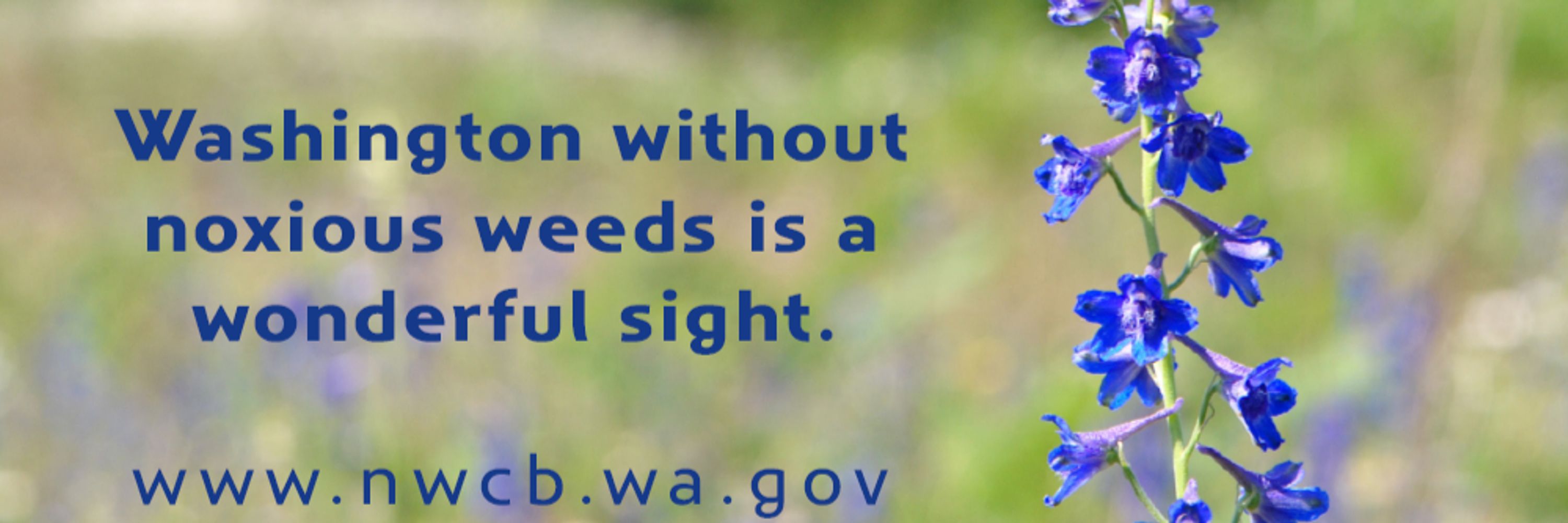
https://www.nwcb.wa.gov/
Other species are waterhemp, black locust, and Norway maple.
See our website (www.nwcb.wa.gov/whats-new) for information on how to provide testimony before or at the hearing.
#invasive

Other species are waterhemp, black locust, and Norway maple.
See our website (www.nwcb.wa.gov/whats-new) for information on how to provide testimony before or at the hearing.
#invasive
See WSDA's news release for more information:
agr.wa.gov/about-wsda/n...
#pnw #agriculture #birds #invasiveplants

See WSDA's news release for more information:
agr.wa.gov/about-wsda/n...
#pnw #agriculture #birds #invasiveplants


#pnw #agriculture #invasiveplants




#pnw #agriculture #invasiveplants
It can grow in and impact a open areas throughout the state, from croplands to sub-alpine meadows.
#PNW #InvasivePlants

It can grow in and impact a open areas throughout the state, from croplands to sub-alpine meadows.
#PNW #InvasivePlants
#PNW #coastal #invasive




#invasivePlants #pnw #conservation




#invasivePlants #pnw #conservation
#agriculture #wetlands #pnw #invasivePlants


#agriculture #wetlands #pnw #invasivePlants
#InvasiveSpecies #PNW #weeds #agriculture #cattle #environment




#InvasiveSpecies #PNW #weeds #agriculture #cattle #environment
invasivespecies.wa.gov/report-a-sig...
#PNW #ecology

invasivespecies.wa.gov/report-a-sig...
#PNW #ecology
To learn more about the listing process: kingcountyweeds.com/2023/10/18/n...
#PNW #invasiveplants

To learn more about the listing process: kingcountyweeds.com/2023/10/18/n...
#PNW #invasiveplants

#pnw #invasiveplants #edrr




#pnw #invasiveplants #edrr
#PNW #InvasiveSpecies #sunflowers #botany

#PNW #InvasiveSpecies #sunflowers #botany
Slenderflower thistle (Carduus tenuiflorus), a Class A Noxious Weed, are VERY spiny, tall, and have relatively small flower heads while also producing many flower heads on the top of each spiky stem.
They degrade open grassy and pasture areas.
#PNW #Invasive

invasivespecies.wa.gov/campaigns/cl...
#boating #kayaking #PNW


invasivespecies.wa.gov/campaigns/cl...
#boating #kayaking #PNW
#PNW #invasivespecies #botany #conservation #habitat #biology

#PNW #invasivespecies #botany #conservation #habitat #biology
While weed flowers can provide for pollinators, native plants can support a larger diversity of insects, including over 600 native Washington bee species!
#WorldBeeDay #agriculture #gardening #forestry #biodiversity #nativeplants

While weed flowers can provide for pollinators, native plants can support a larger diversity of insects, including over 600 native Washington bee species!
#WorldBeeDay #agriculture #gardening #forestry #biodiversity #nativeplants
Learn about South Puget Sound prairies, endangered species, habitat restoration, and get exclusive access to a beautiful trail surrounded by flowers.
wolfhaven.org/events/
#PNW




Learn about South Puget Sound prairies, endangered species, habitat restoration, and get exclusive access to a beautiful trail surrounded by flowers.
wolfhaven.org/events/
#PNW
#invasivespecies #ecology #ranching

#invasivespecies #ecology #ranching
This will be a valuable opportunity for professionals and the interested public to network, cross-train, and learn from their peers. Info:
invasivespecies.wa.gov/event/puget-...

This will be a valuable opportunity for professionals and the interested public to network, cross-train, and learn from their peers. Info:
invasivespecies.wa.gov/event/puget-...
It will be at the beautiful Lakewold Gardens on May 13th.
Attendees can get 5 WSDA herbicide recertification credits. We only have room for 13 more people in the room, so register now!
forms.gle/sudTX15VVGJs...
#washingtonstate #workshop

It will be at the beautiful Lakewold Gardens on May 13th.
Attendees can get 5 WSDA herbicide recertification credits. We only have room for 13 more people in the room, so register now!
forms.gle/sudTX15VVGJs...
#washingtonstate #workshop
#invasivespecies #invasiveplants #noxiousweeds #toxic #poison #botany #livestock #gardening




#invasivespecies #invasiveplants #noxiousweeds #toxic #poison #botany #livestock #gardening
#biocontrol #InvasiveSpecies #entomology #botany #ecology #weeds

#biocontrol #InvasiveSpecies #entomology #botany #ecology #weeds
Many Noxious Weeds, like Dalmatian toadflax (Linaria dalmatica) cause a lot of harm to agriculture. They invade fields, outcompete crops, and require time and resources to manage.
Help protect Washington's farmers by controlling noxious weeds whenever you can!

Many Noxious Weeds, like Dalmatian toadflax (Linaria dalmatica) cause a lot of harm to agriculture. They invade fields, outcompete crops, and require time and resources to manage.
Help protect Washington's farmers by controlling noxious weeds whenever you can!

